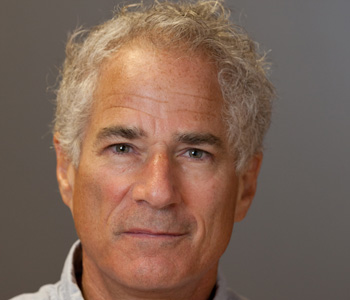David Sepkoski
Catastrophic Thinking: Extinction and the Value of Diversity from Darwin to the Anthropocene
University of Chicago Press
360 pages, 6 x 9 inches
ISBN 978 0226348612
“Why do we care about diversity?” Assuming that biological and, to a lesser extent, cultural diversity are accepted as important values in current Western society, how did this come to pass, and have we always thought this way? That is the central question addressed in this book.
While many existing books on biodiversity have examined various dimensions of the current crisis, mine takes a different approach. Catastrophic Thinking reconstructs the historical process by which diversity came, over the past two centuries, to be held as an intrinsic value. Ultimately, I argue that the celebration of diversity—in both biological and cultural forms—is a fairly recent invention. And the key concept running throughout this story is extinction.
We care about biodiversity in large part because we fear the consequences of its loss: the loss of plants that might provide the basis for new medicines, the depletion of environments that provide so-called “ecosystem services” on which our own species depends, the disappearance of animals we value for food and recreation. In other words, the single, unified threat to biological diversity is extinction—or more precisely, mass extinction, which involves the coordinated and cascading extinctions of many groups of organisms in a relatively short period of time.
Surprisingly, however, extinction was not a major area of scientific study prior to about 50 years ago, nor did Western culture attach much significance to the general phenomenon. Indeed, during much of the nineteenth century and well into the twentieth, Western scientists regarded extinction as a slow, piecemeal process that punished nature’s “losers” and rewarded those species that are better adapted for their environments. Charles Darwin, for example, rejected the notion that mass extinctions had ever occurred in the geologic past, and it wasn’t until the 1970s that scientists began to take extinction seriously. Because extinction was not seen as a threat to the health of the environment, the preservation of biological diversity—and, by extension, cultural diversity—was simply not considered an important value in Darwin’s day.
Clearly, we see things very differently today, but this enormous shift in values has not been documented in a comprehensive way. Catastrophic Thinking tells the story of how a major scientific and cultural shift in thinking about the consequences of extinction—and ultimately, diversity—took place over the last 200 years, from a culture that valued diversity very little to one in which it is held up as a central value. One of the key points of transformation occurred during the 1970s and 1980s, when the reality of past global, catastrophic mass extinctions was accepted. This scientific shift was conditioned by a broader set of political and cultural debates and events spanning the twentieth century: two world wars, nuclear proliferation, political upheaval, and environmental disasters all contributed to the sense that human history had entered an age of crisis.
Scientific consensus about catastrophic change, in other words, was influenced by and has reinforced a broader “catastrophic thinking” about the fate of human civilization. It is in this context, I argue, that we have come to value diversity, because only at this later date have Westerners tied the fate of our own species to that of the broader natural environment we inhabit. Our current moment, in which the threat of anthropogenic climate change and species loss challenges us to consider whether we have permanently altered the geological and evolutionary trajectory of our planet, is both a consequence of this longer history, and an opportunity to conceive of new ways of thinking about our future.
Scientific and cultural spheres are not separate but intertwined, and have been, since the emergence of professional scientific disciplines more than 200 years ago. Science is, like art, politics, economics, or religion, a product of human culture, and is as responsive to—and influential for—prevailing cultural norms and beliefs as any other aspect of history.
Science is a somewhat self-correcting process, and we genuinely have, as a species, increased our empirical and theoretical understanding of the universe around us in quantitative terms. But that doesn’t mean that science today is any less a product of prevailing cultural values and beliefs than it was in the nineteenth century—we just have different beliefs and values now.
Recognition that mass extinctions are a fact has led to theories about how they work, which in turn have conditioned the belief that extinction has been a major force in the history of life. But the implications of that belief—how it makes us feel, how it informs our political concerns, what it portends about the present and future of humanity—remains a cultural as well as scientific matter. Understanding how mass extinctions have worked in the past doesn’t automatically tell us whether and how we should address them in the present.
Moreover, science itself is conditioned by cultural values that affect the very questions scientists ask and the categories they employ. The biologist E.O. Wilson—a major figure in the final chapter of this book—has tirelessly promoted the cause of biodiversity since the 1980s. He has extrapolated a number of consequences for current species loss from analogous events in the geological past—including, notably, the claim that humanity is currently causing a “Sixth Extinction”, which is an explicit reference to the five major mass extinctions documented in the fossil record. But he has also been forthright about how his basic love of nature—and in particular, humble forms of nature like the ants he has devoted a career to studying—have influenced his arguments in favor of the preservation of all life. He believes that diversity is valuable, in other words, as much as he knows it is.
I came to write this book after spending many years studying the history of biological and paleontological theories of evolution and extinction. (I should confess that my father, the late paleontologist Jack Sepkoski, was a major contributor to current understanding of extinction dynamics). The emergence of modern ideas about extinction was central to much of my past work, in which I considered the perspective of scientific theories, methods, and institutions. Somewhere, I realized it was a story that should be meaningful to a broader audience. If history is to be useful or valuable, it should illuminate some ongoing concern for human society—and, as I realized, there is no more important ongoing concern than the problem of human impact on the global environment.
In a case study comes in the book’s fifth chapter, I discuss how paleontological studies of extinction intersected with political debates about nuclear proliferation in the 1970s and 1980s.
A variety of studies had, since the 1950s, attempted to estimate the consequences of a nuclear exchange between the US and the Soviet Union, generally with fairly grim predictions. Nonetheless, by the early 1980s the general public was less concerned about nuclear exchange than it had been in previous decades. While many factors contributed to this—including the overshadowing effect of the cultural and political upheavals of the 1970s and 1980s—a significant component was the persistence of political rhetoric that a nuclear war was “winnable.”
This changed, quite suddenly and dramatically, in the early 1980s, thanks in part to the hypothesis of “nuclear winter.” This scenario, advanced most prominently by the astronomer and television personality Carl Sagan, predicted that even a partial nuclear exchange could set off a cascade of ecological and environmental failures leading, ultimately, to up to a year of near-total darkness from dust kicked into the earth’s atmosphere. The consequence, he and colleagues argued, would be mass extinctions on a scale not seen in 65 million years, potentially including the human species.
Popular films and books like the 1983 television movie The Day After did much to galvanize public opinion by realistically depicting the aftermath of a nuclear war, but it was nuclear winter that provided the unassailable certainty that such a conflict would bring the end of civilization. Moreover, the public’s attention was also directed to a stunning new hypothesis, advanced in 1980, that the dinosaurs’ own extinction was produced by the impact of a gigantic asteroid whose total destructive impact was equivalent, in the estimate of Nobel laureate physicist Luis Alvarez, to “100,000,000 hydrogen bombs.” The connection between the disaster facing humanity and the one that obliterated one of evolution’s most successful groups could not have been clearer.
There is a direct connection between the dinosaur impact hypothesis and changing attitudes towards nuclear proliferation. A striking feature of the impact scenario was that the real damage was done by planet-wide dust clouds that blanketed the atmosphere and cut off photosynthesis for a year or more. Not coincidentally, Sagan and his collaborators had contributed directly to the climate modeling used in the impact hypothesis several years before the nuclear winter scenario was proposed, and explicitly acknowledged that the two hypotheses are essentially identical.
Popular fascination with dinosaurs and their demise therefore reinforced nuclear anxieties—and vice-versa—in a kind of feedback loop that ultimately contributed to the political will to commit to massive disarmament. It also helped shape a new public awareness of extinction that directly informed subsequent debates around climate change and biodiversity loss: if it happened to the dinosaurs, it could happen to us—we are, in a sense, both the dinosaur and the asteroid.
My assumption is that readers of this book are aware of and concerned about the impact of climate change and other crises linked to human activity. I did not write this book to question the seriousness of these developments, but I do want my readers to think critically about the relationship between science and culture.
While there are certainly isolated examples of rogue scientists who have distorted their findings to serve the interests of industry or politicians, science is more often cultural or political in other, less dramatic ways. The relationship between fact, theory, and belief is extremely complex: facts, like the reality of mass extinctions in the geological past, have contributed to theories, like the nuclear winter scenario, which in turn have conditioned beliefs, like the certainty that biodiversity is an inherently good thing. If we look, say, at the development of the biodiversity movement in the 1990s and beyond, which is the subject of the last chapter of the book, we see that all of these concerns are combined in the practice of science itself.
Importantly, general receptiveness to scientific ideas is strongly conditioned—among scientists as well as the public—by prevailing cultural attitudes. It was no coincidence, the book argues, that the reality of past catastrophic mass extinctions gained widespread acceptance in the era of nuclear proliferation, whereas Victorian naturalists like Darwin rejected such proposals in favor of a model of earth’s history that reinforced wider beliefs about progress and cultural superiority in human society. Likewise, the current belief that biological and cultural diversity is essential for the survival of humanity was conditioned by studies—in ecology, genetics, and paleontology—suggesting that ecological systems are more stable when they are more diverse.
This shouldn’t convince us to mistrust scientists—who are only human, after all—but should give us pause when reflecting on the cultural authority of science. By providing a window on the complex relationship between scientific authority and cultural values, this book encourages readers to be critical and reflective about the sources of some of the deepest values we hold. In the twenty-first century we will increasingly rely on science to help us understand and hopefully overcome the challenges we face, but we must understand that science itself cannot tell us what to care about or how to act.




We don't put paywalls. We don't distract you with ads. We don't sell your data.
Please help to keep this running!